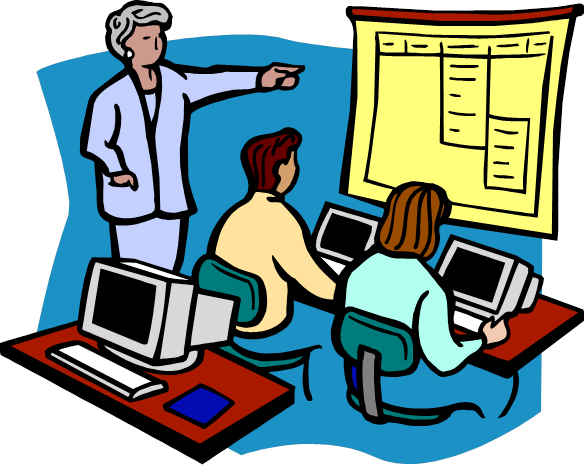 When I offer PowerPoint training, most of the time it’s for people who already know how to use the software but who want to know more. What is good design? Where do I get photos to use in my presentations? Why do some colors go well together and others don’t? How do I tell a story? These are the kinds of questions I usually answer. So I was surprised when a woman in the audience of a recent workshop asked me, “How do I learn PowerPoint?”
When I offer PowerPoint training, most of the time it’s for people who already know how to use the software but who want to know more. What is good design? Where do I get photos to use in my presentations? Why do some colors go well together and others don’t? How do I tell a story? These are the kinds of questions I usually answer. So I was surprised when a woman in the audience of a recent workshop asked me, “How do I learn PowerPoint?”
Well! That was a new question for me, but I quickly realized that although I live and breathe PowerPoint every single day there are millions of people in the world who don’t have a clue as to how to use it. So I decided it would be a good idea to come up with a list of ways you can learn how to use PowerPoint if you are a rank beginner (or noob for all you GenY readers).
Lynda.com
The best way I know of to quickly learn new software is to take a course on Lynda.com, which is what I recommended to the woman who asked. To be completely transparent, I am not affiliated with Lynda.com nor do I receive a commission for driving business their way. But I’m happy to recommend them because this website is great! Here are the highlights:
- They offer courses in all kinds of software, marketing, and design.
- You can access the site using your desktop computer, laptop, or mobile devices.
- They give you a week to try it out for free.
- The plans are very affordable.
- Once you sign up, you can take as many courses as you have time for within the time period you’ve enrolled for. There’s no limit to how many you can take!
I used Lynda.com to learn enough WordPress to make this website. Lynda.com is awesome.
Adult Education classes
If you’re just starting out with computers, then taking an Adult Ed class on PowerPoint at your neighborhood vocational school, community college, or high school might be for you. They cover the basics and take a very methodical approach. The good thing about Adult Ed classes is that they’re generally cheap and offered closeby. The bad thing is that the curriculum can seem overly simplistic or go at a snail’s pace because it is assumed that the students know next to nothing about the subject.
One-on-one training
If there is something that you’re just not getting about PowerPoint or if you have a specific project you’re working on that you need help with, then one-on-one training is a great option. It’s best if you have a good idea of what you want to learn before starting your training so that your training session is more productive and focused. And by a staggering coincidence, I offer one-on-one training.
On-the-job training
You want to learn a lot of software, fast? Get a job in a copy shop. You have to know or be able to learn just about every graphic design software there is so that you can work with customers’ files. There’s nothing like a looming deadline to accelerate the learning process, I can tell you from experience. This process is not for everyone, and frankly I started this way long before it was expected that job applicants have a basic understanding of software before they’re considered. But hey, it was the Dawn of Desktop Publishing! It was the Wild West!
If you’re unable to travel back to 1989 or to convince someone to take a chance on you, maybe you can get your boss to spring for Lynda.com training. Once you explain how cost effectively you can learn new skills that will make his job easier, I’ll bet he’ll practically throw the corporate credit card at you!
Applying what you’ve learned
After you’ve mastered the basics, it’s time to put all that newfound knowledge to use. If you are an impetuous type of person, the next thing to do is advertise the fact that you are a PowerPoint designer and land a job with a really tight deadline. As I mentioned earlier, nothing motivates like a due date, and you’ll be scrambling to prove to the client that you really are a PowerPoint designer. Once you get past that first job, the ones after that are much easier.
If your taste for risk isn’t that keen, then you should start slowly by building up your PowerPoint portfolio at your own pace. Here are a few suggestions:
- Find a bad presentation and redesign it. Here’s a bunch to get you started.
- Design a presentation around a company’s press release. Use their website to give you ideas about what the presentation template should look like.
- Design a presentation detailing a process you do at work, as if you were training someone else to do it.
The most important thing is to practice, practice, practice. The more you design and redesign presentations, the better you’ll get at it.
Your turn
How did you learn how to use PowerPoint? Did any of the methods I just described work for you?
